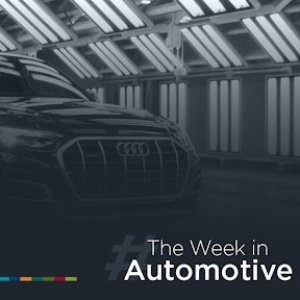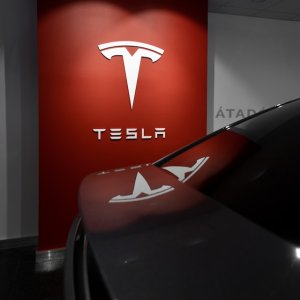MARKET EVOLUTION BRINGS NEW OPPORTUNITIES

STORY INLINE POST
Q: What challenges does Scania face in boosting the presence of its cab-over trucks in the Mexican heavy-vehicle park? A: Clients that adopt our cab-over vehicles tend to have
186 US-style trailers in their fleet because it is hard to come across longer European-style units. This forces companies to couple European-style cab-over trucks with US-style trailers, which leaves a space between the back of the driver’s cabin and the front of the trailer. When the truck is moving, this space causes a negative aerodynamic effect that makes fuel efficiency only 6 percent greater when it
could be up to 15 percent greater.
Q: How has Mexico’s demand for Scania’s alternate motorization configurations evolved?
A: Most public-transportation systems in Mexico use diesel- powered, 7m units but as cities look for more efficient vehicles, Scania’s CNG-powered BRTs have become a good alternative. We are building and about to deliver 12 CNG articulated units and 25 CNG 12m buses for the city of Puebla. Yet, the Mexican market has difficulties adopting this type of truck. Compared to California where around 70 percent of all new inner-city and interurban buses sold in 2017 were CNG-powered, Mexico’s CNG vehicle sales only amount to 2 percent of total bus sales. The market would adopt these solutions more easily if there were a larger natural-gas station network.
Q: How are Scania’s body manufacturing partners evolving to cater to local bus demand?
A: Our main body manufacturing partners are growing their capabilities. We work with several companies present in Mexico including Irizar, Marcopolo, Beccar, Ayco, Ayats and Busscar. When building a bus, Scania works with the body manufacturer that clients choose. We build and deliver the chassis at these companies’ assembly line so they finish it according to the client’s specifications.
Q: What is Scania’s strategy for top-of-the-line heavy- vehicles equipped with advanced safety and comfort technology in Mexico’s price-sensitive market?
A: We offer some of the most expensive products in Mexico’s heavy-vehicle sector. Scania sells the costliest and best-selling vehicle in the interurban segment. Clients are willing to accept a higher initial cost if it comes with greater benefits such as fuel efficiency and aftersales service. Scania also sells some of the most expensive trucks in Mexico. European brands only hold about 3 percent of that segment but I expect this share will increase thanks to NOM-012 and the rising price of diesel. This is a trend we have seen in other countries. Markets where US and European alternatives competed tend to adopt more European technology over time.
Q: How has Scania evolved regarding its aftersales operations and what advantages does this offer to clients?
A: Scania has opened four new maintenance shops in 2018 in Mexico and we want to open two more in Chihuahua and Tuxtla. These shops can cater to vehicles circulating in the region as well as the local Scania fleets. We open seven shops per year on average, with the majority being located at client yards. When a client purchases a significant number of Scania vehicles, we take our service operations to their facilities.
Scania has marketed more than 4,000 maintenance policies for its buses. About 68 percent of the Scania fleet in circulation has its maintenance directly with the OEM while most heavy vehicle brands only have a 6-percent rate on average. When clients hire their maintenance from us, they can be confident their units will be in good hands.
Q: How has global demand for increasingly fuel-efficient heavy vehicles impacted Scania’s assembly operations? A: In the early 2000s, Europe accounted for 80 percent of Scania’s sales and Latin America accounted for only 20 percent. This has changed and in 2018 we saw greater demand for our vehicles in Asia than in Latin America as the company enters new regions. China has become one of our most important markets.
Scania reached a global backlog of around 100,000 trucks in 2018, which is a record for the company. We are increasing our sales as the global market develops a taste for our New Generation Scania vehicles. Being the most fuel-efficient models in Europe, demand for these vehicles has increased. However, this has also put pressure on suppliers to deliver components faster as delivery times have lengthened due to the saturation of production lines. In Mexico, we have a record-breaking backlog of more than 800 vehicles. Though delivery times have extended, clients continue to order Scania trucks as they recognize their advantages.
Q: What challenges are electric buses facing to grow their presence in the market?
A: While Scania and Volvo already offer all-electric buses in Sweden, the total electric fleet of both brands is no more than 30 units. The Swedish market prefers gas-powered buses because electric versions are too expensive while gas-powered units offer both price and environmental advantages. In terms of initial and operative costs, electric buses are still the most expensive option by far. Scania has electric, hybrid, ethanol, CNG, diesel and hydrogen fuel-cell motorization technologies. We expect hydrogen fuel cells to become the motorization technology of the future.
Q: What advantages can the implementation of new norms such as NOM-044 deliver in terms of vehicle safety?
A: City governments around the world have moved toward banning conventional cab configurations where the truck’s engine and hood are placed in front of the driver’s cabin because of the poor visibility and maneuverability they offer. In Mexico, it is sad to see so many long-nosed trucks used within cities for waste collection and similar activities. These units do not meet visibility regulations of virtually any country as children, animals and shorter people are harder to see. Blind spots and other safety concerns are generally not discussed in Mexico and long- nosed trucks are still out there.
Q: How do you expect new emissions regulations to impact the Mexican heavy-vehicle market?
A: The adoption of European emissions norms in Mexico in 2014 opened the door for European OEMs to sell their vehicles in Mexico. Before this, only US trucks that met US EPA emissions standards could be purchased in the country. There are some differences between EPA and Euro standards in terms of emissions of particulate matter and gases but these standards generally work as a barrier against foreign vehicles.
Generally, European trucks have greater fuel efficiency than their US counterparts. On average, Scania trucks have 6 to 15-percent greater fuel efficiency than the brands of US and other European units in the market because they need fewer RPMs to generate similar torque. Since fuel is expensive in Mexico, fuel efficiency makes a difference for clients looking for new trucks.
Q: What are the advantages of being a Swedish company in Mexico?
A: Compared to German or Japanese companies, Swedish companies are less hierarchical. Scania has a more inclusive management form where hierarchies exist on paper but interactions can happen directly. All collaborators at Scania must spend at least one day a year helping our fellow mechanics servicing Scania vehicles at the shop. This gives us the opportunity to generate knowledge about our product. Some of us are mechanics while others are managers, engineers or analysts but at the end of the day we are a service-oriented company that builds and services trucks and buses.






















